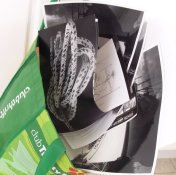Lots of good information here. On the debate between those who value 'good printing skills' over the 'learn to make a good negative' people, I'd say the two views are opposite sides of the same coin - but that they probably represent stages a fledgling photographer must go through to become a good photographer.
At first novice photographers find the darkroom most interesting ; it's an exciting new experience and the reward of making a sparkling wet print is stunningly immediate. Whereas, in comparison, learning how to use the camera well and process film consistently seems dry and boring. Worse still, the rewards of camera and processing are deferred, so it's easy to see why absolute beginners find printing most pleasurable.
Later, as the beginner becomes a more competent printer, he/she starts to understand why more consistent negatives would make things easier in the darkroom and, so, exposure and processing begin to get greater attention. Soon, the photographer realises how much more he/she could do with better negatives. Then, instead of fire fighting to salvage a tolerable result, it becomes a case of exploring and unlocking the potential stored within the negative. In the mature photographer shooting, processing and printing become complementary components - each one contributing towards the whole.
On the subject of "all those great images that would have been thrown into the bin because they weren't great negatives". I think it's a basic misunderstanding of how the business of photography works - especially in social documentary/photojournalism & fashion. In reality, most of these photographs are shot by a photographer who then hands the images over to a professional printer and it's the printer's job to extract a good image out of the, often shoddy, negatives. Sure, there are exceptions to this but, in reality, it doesn't make sense for a jobbing photographer to print his own stuff when he/she can earn much more money shooting.
Professional printers are the unsung heroes of photography. Next time you see an exhibition have a hard look at the images and try to work out how consistent the original negatives really were. Look very closely at, say, whether the lighting on each subject was actually very different, despite the pictures themselves seeming very consistent. That's the sign of a great printer at work.
A good case in point is the Tate Britain's Robert Mapplethorpe exhibition that I saw recently in Eastbourne. Yes, there were a lot of great images, but if it wasn't for the printer (not named, as far as I could see) pulling all the images together into a cohesive whole with his/her superb technique, the exhibition would have been much less coherent and convincing...
 .
.








 !
!

